Kpop Legends History, Famous Groups, and Iconic Songs You Must Know
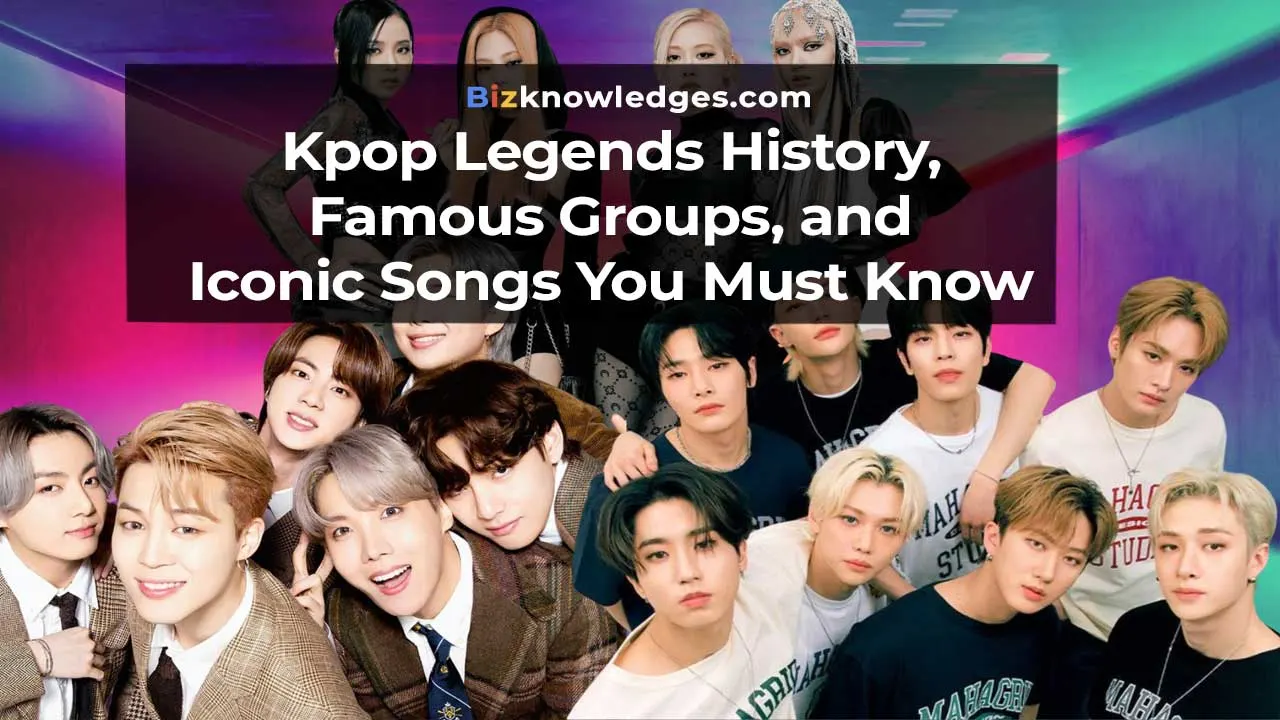
I’ve spent years following the rise of Kpop, not just as a fan, but as someone deeply fascinated by its evolution from a local South Korean trend into a global cultural powerhouse. I’ve seen rookie groups train for years before debuting, watched iconic songs shatter streaming records, and experienced the way fandoms unite across continents with a shared passion.
Kpop isn’t just music, it’s a blend of art, performance, and storytelling, wrapped in vibrant visuals and powered by dedicated fans. From the intense training system that shapes idols into world-class performers to the marketing strategies that make every comeback feel like an event, every detail is intentional. In this post, I’ll take you behind the scenes exploring its history, legendary groups, iconic songs, challenges, and its powerful impact on global culture. Whether you’re new to Kpop or a seasoned fan, you’ll see why it’s more than entertainment, it’s a movement.
What Does Kpop Stand For
Kpop stands for Korean pop music. It is a style of music that started in South Korea and has now become popular all over the world. The word itself is short for “Korean pop,” but it is more than just a music genre. Kpop mixes many styles like pop, hip-hop, R&B, EDM, and even rock, creating a fresh and exciting sound.
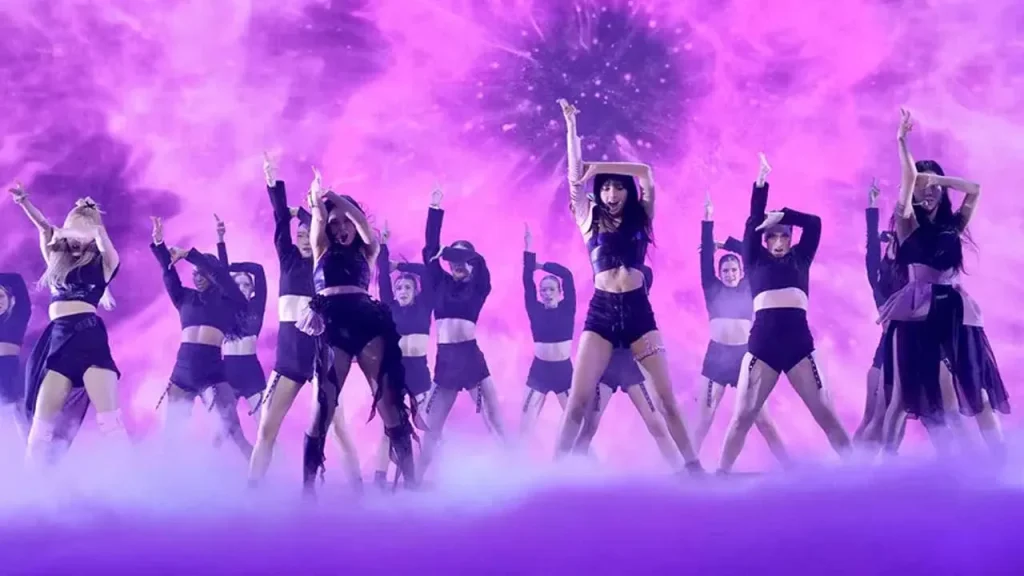
What makes Kpop different from other types of music is its focus on performance. Artists, called idols, are trained not only to sing but also to dance, act, and connect with their fans. Kpop is known for its catchy songs, colorful music videos, creative fashion, and impressive choreography.For many fans, Kpop is not just music they listen to, it is a culture they follow. It introduces them to the Korean language, food, and traditions, making it a global bridge between South Korea and the rest of the world.
The History of Kpop From First to Fourth Generation
First Generation (1990s – early 2000s)
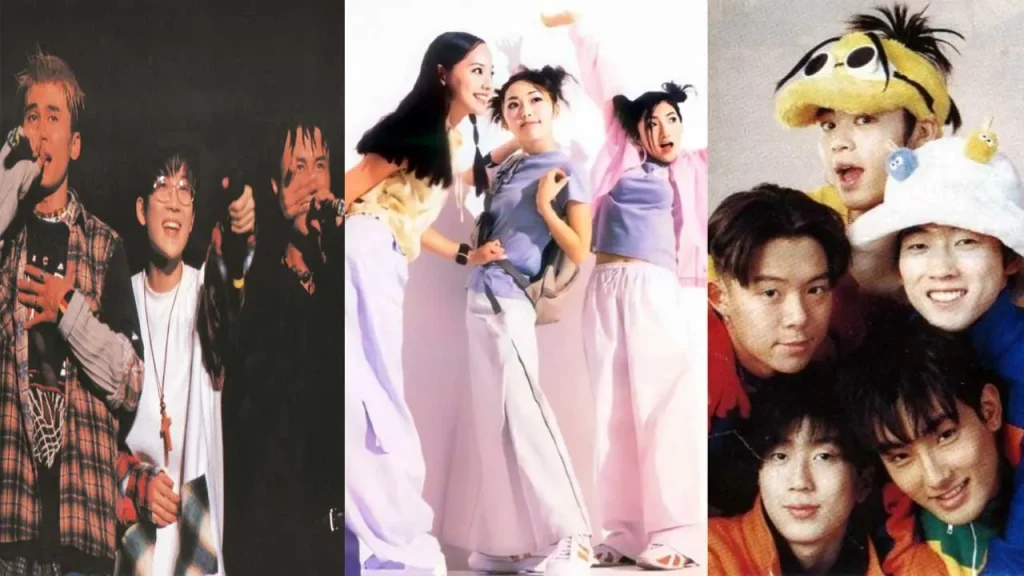
Kpop’s modern story began in 1992 when Seo Taiji and Boys changed the music scene by mixing Korean lyrics with Western pop, rap, and dance. Before this, Korean music was dominated by ballads and trot. Their bold style inspired a wave of new artists, leading to the debut of the first generation of idols such as H.O.T, S.E.S, and Shinhwa. These groups introduced the idol training system, where young trainees spent years learning singing, dancing, and stage presence before debuting.
Second Generation (mid-2000s – early 2010s)
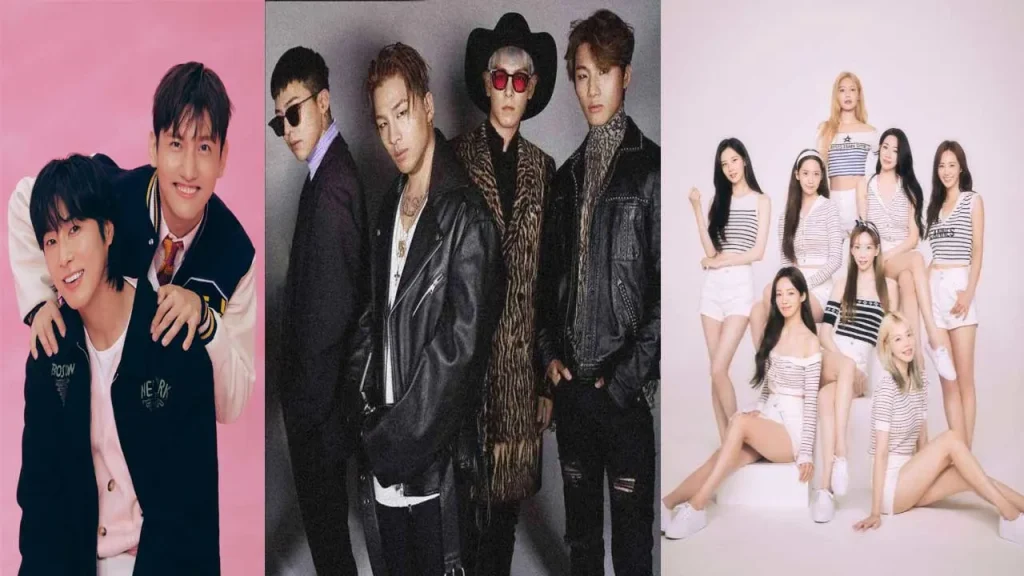
This was the era when Kpop started spreading across Asia and gaining early attention in the West. Groups like TVXQ, Girls’ Generation, BigBang, and Wonder Girls raised the bar for performances, music videos, and fan culture. The industry also became more polished, with bigger budgets and more ambitious concepts.
Third Generation (early 2010s – late 2010s)
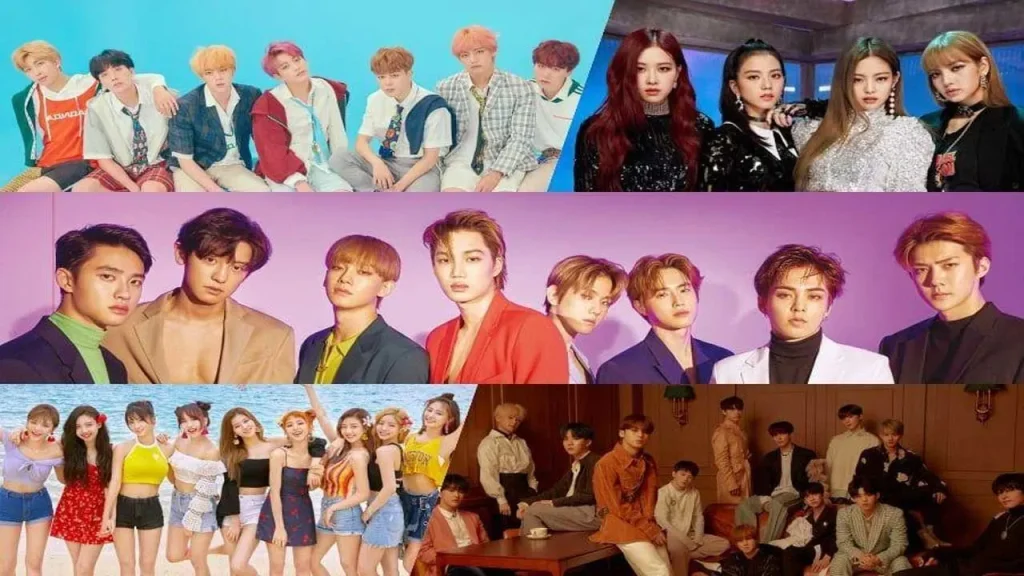
Kpop went truly global in this era. BTS, EXO, BLACKPINK, and TWICE became household names worldwide, selling out stadiums, topping international charts, and breaking records on platforms like YouTube and Billboard. Social media played a huge role in this growth, connecting idols with fans instantly.
Fourth Generation (late 2010s – present)
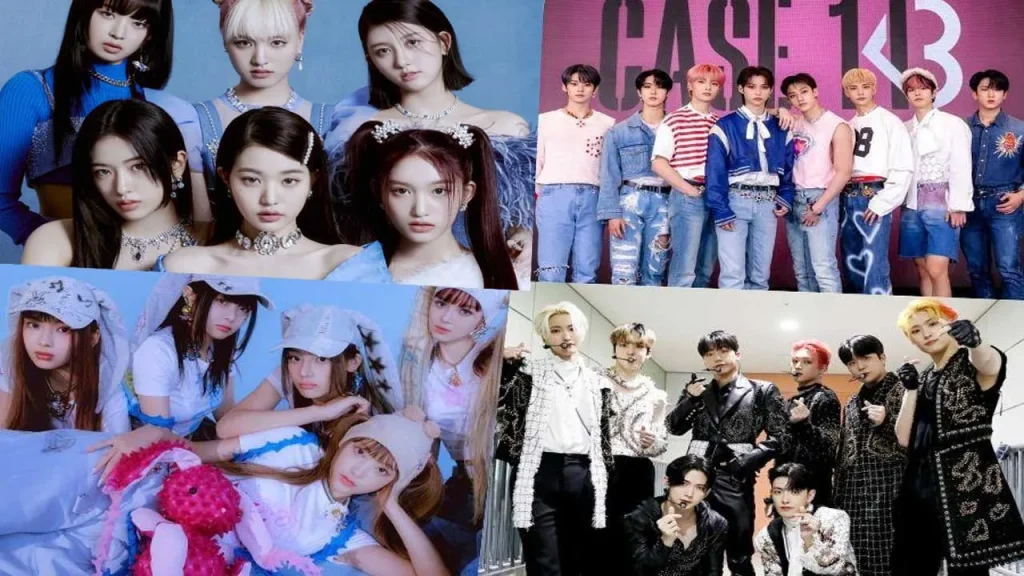
The newest wave of Kpop is led by groups like Stray Kids, ATEEZ, NewJeans, and IVE. They bring fresh sounds, unique concepts, and powerful performances. This generation is more experimental, blending genres and using global platforms to connect directly with international fans, proving that Kpop continues to evolve without losing its core identity.
What Makes a Kpop Legend?
A Kpop legend is not just a popular artist; it is someone or a group that leaves a long-lasting mark on the industry and fans worldwide. These are the idols who set new standards for music, performance, and fan culture. They inspire not only their fans but also the next generation of Kpop artists. One of the first signs of a Kpop legend is their ability to stay relevant for many years. They release hit songs that people keep listening to long after their debut. Their albums break records, and their music videos reach millions, sometimes billions, of views.
Performance is another key factor. Kpop legends deliver unforgettable live shows, blending powerful vocals with sharp, synchronized dance moves. Their stage presence captures attention instantly, whether in a small venue or a stadium filled with tens of thousands of fans. A true Kpop legend also has a strong connection with their audience. They use fan meetings, social media, and even personal letters to maintain a bond with fans. Many of them inspire people beyond music, influencing fashion trends, social causes, and even the popularity of the Korean language and culture.
Famous Kpop Groups and Idols
Kpop has produced countless stars, but only a few have truly shaped the industry and earned legendary status. These groups and idols are remembered for their signature styles, record-breaking achievements, and unforgettable performances.
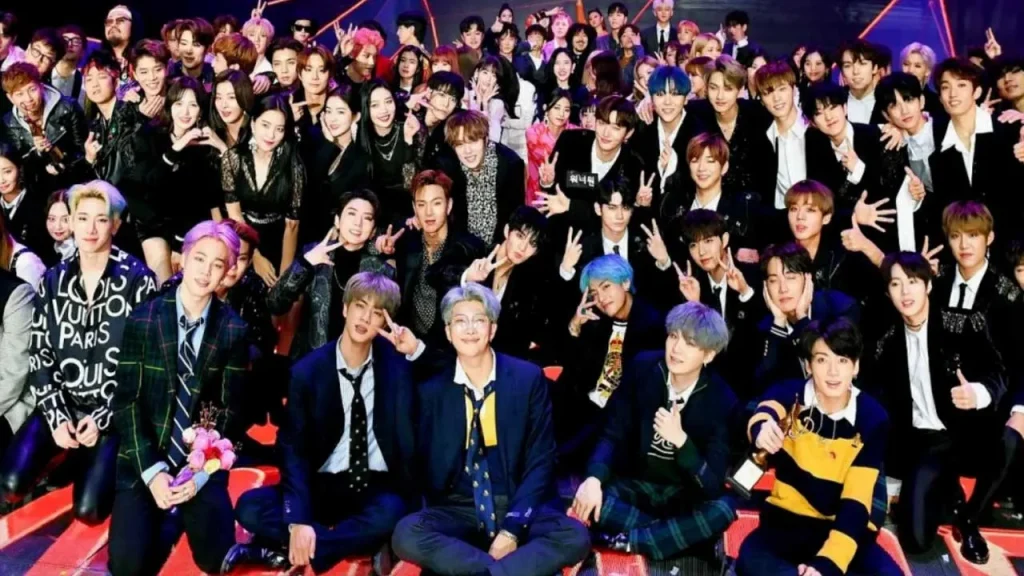
H.O.T are remembered as the group that started it all, paving the way for idol culture and setting the template for fan clubs and large-scale concerts in South Korea. S.E.S captured hearts with their soft harmonies and feminine style, inspiring future girl groups to balance strong vocals with charm. Shinhwa became a rare example of a group staying together for decades, proving that loyalty and teamwork can outlast trends.
TVXQ amazed audiences with their vocal strength and dramatic stage performances, often delivering live shows as powerful as their recordings. Girls’ Generation became icons of elegance and energy, with hits like “Gee” and “I Got a Boy” still considered essential Kpop classics. BigBang blended music and fashion into a rebellious yet stylish brand, while 2NE1 broke the mold for girl groups by embracing fierce, independent imagery and a bold sound.
BTS have made history by topping the Billboard charts, selling out stadiums worldwide, and delivering messages of self-love and unity. EXO built a reputation for flawless vocals and intricate concepts, while BLACKPINK became global fashion and music trendsetters, performing at Coachella and collaborating with international stars. TWICE charmed audiences with catchy choruses and bright personalities, making them one of the most beloved girl groups in Asia.
Among the newer generation, Stray Kids have earned a name as self-producing artists who write and compose much of their own music. ATEEZ are known for high-energy performances that feel like full theatrical experiences. NewJeans brought a refreshing, retro-inspired sound that feels both nostalgic and new, and IVE quickly gained attention for polished visuals and addictive hits that top the charts.
Kpop Most Iconic Songs
Kpop’s journey is marked by songs that didn’t just top charts but became cultural moments that shaped the identity of the genre. These tracks often introduced fresh sounds, bold concepts, and unforgettable performances that set new industry standards. Many sparked dance trends, inspired massive fan projects, and even influenced fashion and pop culture far beyond South Korea. Each of these songs carries its own story, style, and impact reminding us that Kpop is more than music; it’s an experience that connects people across languages and borders.
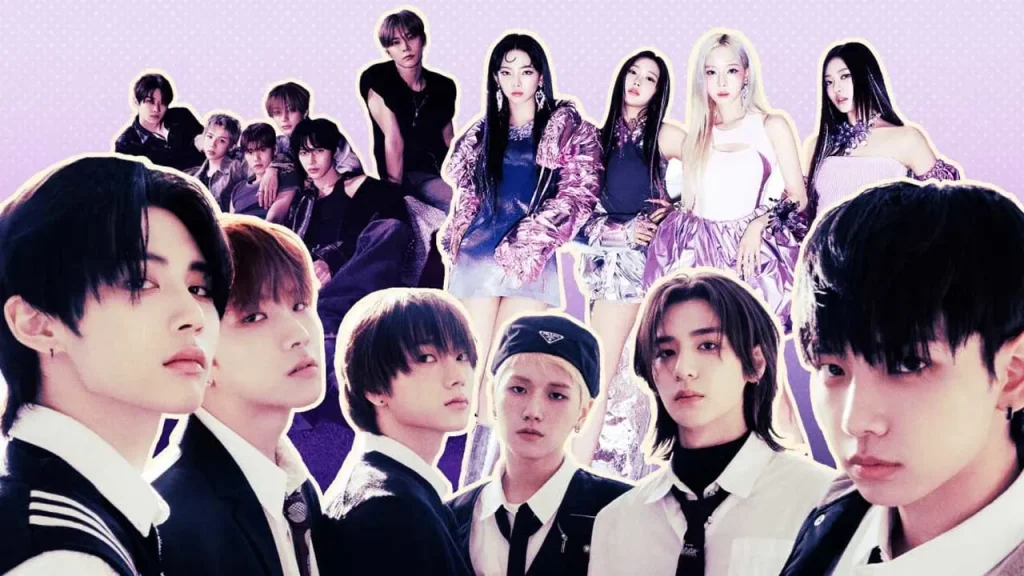
- Candy – H.O.T
This cheerful and colorful track became the defining song of the first generation of Kpop. With its playful choreography, bright costumes, and upbeat melody, “Candy” captured the hearts of young fans in the late 1990s and set the stage for idol fan culture in South Korea. - I’m Your Girl – S.E.S
A soft and melodic track that showcased the group’s vocal harmonies and gentle charm. “I’m Your Girl” inspired a wave of girl groups that followed, proving that Kpop could mix sweetness with style while still delivering strong musical quality. - Perfect Man – Shinhwa
Known for its polished choreography and strong live vocals, “Perfect Man” remains one of Shinhwa’s most memorable hits. It became a benchmark performance for male groups, combining elegance, energy, and emotional delivery. - Mirotic – TVXQ
This smooth and seductive track marked a turning point in Kpop production quality. “Mirotic” impressed fans with its addictive melody, complex dance moves, and the powerful stage presence of TVXQ, helping the group reach a wider global audience. - Gee – Girls’ Generation
“Gee” was more than a song, it was a national sensation. The bright, catchy tune, paired with the famous “crab leg” dance, made it an instant hit in South Korea and across Asia, solidifying Girls’ Generation as the “Nation’s Girl Group.” - Fantastic Baby – BigBang
A bold, high-energy club anthem that combined EDM beats with unforgettable visuals. The “Wow, fantastic baby” hook became instantly recognizable worldwide, making this one of Kpop’s most internationally known songs. - I Am the Best – 2NE1
Fierce, confident, and unapologetic, “I Am the Best” became an anthem for empowerment. Its powerful beat and fashion-forward music video helped 2NE1 break into the international market and stand out as a group with a completely unique style. - Dynamite – BTS
BTS’s first full English-language single, “Dynamite” topped the Billboard Hot 100 and brought the group even more global recognition. The upbeat disco-pop sound and colorful music video offered a burst of joy during a challenging year for the world. - Growl – EXO
“Growl” combined a funky groove with a single-take style music video that showcased the group’s flawless synchronization. Its catchy melody and slick performance helped EXO become one of the top acts of their generation. - DDU-DU DDU-DU – BLACKPINK
This powerful track mixed hip-hop beats with bold choreography and stylish visuals. The music video broke YouTube records, and the song became a global hit that reinforced BLACKPINK’s image as confident trendsetters. - Cheer Up – TWICE
Bright, catchy, and playful, “Cheer Up” became a fan favorite almost instantly. The “Shy Shy Shy” line went viral in South Korea, and the song’s lighthearted energy helped TWICE become one of the most loved girl groups in Asia. - God’s Menu – Stray Kids
A hard-hitting, experimental track that showcased Stray Kids’ creativity and self-production skills. Its unique concept and sharp performance drew international attention and proved the group’s ability to stand out in the fourth generation. - Wonderland – ATEEZ
Known for its cinematic feel and intense stage performance, “Wonderland” became one of ATEEZ’s signature songs. It highlighted their theatrical style and ability to deliver a show-stopping performance every time. - Hype Boy – NewJeans
Fresh and retro at the same time, “Hype Boy” offered multiple music video versions, each telling a different story. Its unique sound and concept made NewJeans one of the most talked-about new groups in Kpop. - Love Dive – IVE
A sleek and elegant track with an addictive chorus, “Love Dive” dominated charts and showcased IVE’s polished image. It quickly became one of the defining songs of the new generation.
Kpop Fans and Fandom Culture
Behind every Kpop legend and iconic song is a powerful force that helps keep the music alive: the fans. In Kpop, fandoms are more than just casual listeners; they are passionate communities that dedicate time, effort, and even money to support their favorite groups and idols. Each fandom has its own name, colors, lightsticks, and special traditions, creating a unique identity that connects fans around the world.
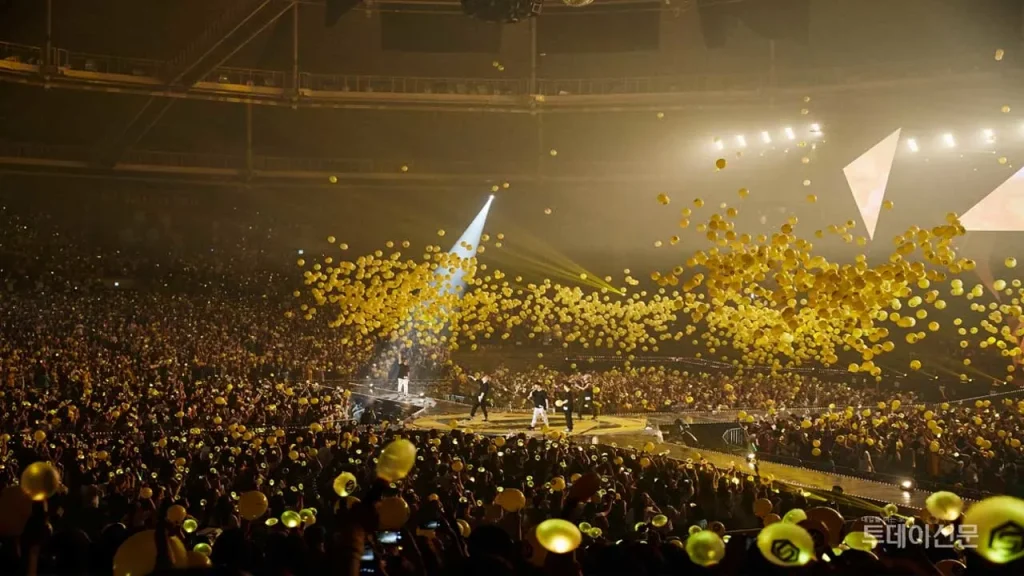
Kpop fans, often called “stans,” are known for their incredible organization. They work together to stream songs, vote in music show competitions, and break records on platforms like YouTube and Spotify. Many fans take part in coordinated social media trends, making hashtags trend worldwide within minutes of a comeback or major announcement.
Fandom culture also extends into creative projects. Fans design banners, create fan art, and produce videos celebrating their idols. They organize birthday events, charity drives, and even large-scale advertisements in public places to show love and support. These acts not only strengthen the bond between fans and idols but also help spread Kpop to new audiences.
What makes Kpop fandoms stand out is their strong sense of belonging. Whether someone is in Seoul, New York, or a small town, being part of a fandom means sharing the same excitement for music releases, concerts, and fan events. This global connection has turned Kpop into more than a music genre; it’s a shared cultural experience that unites millions of people across languages and borders.
How Kpop Changed the Industry
Kpop has completely reshaped the music industry by raising the standard for what it means to be a performer. In Kpop, idols are trained not only to sing but also to dance, act, and engage with their audience. This all-in-one performance style has influenced artists worldwide, making concerts more visually impressive and interactive than ever before.
The way Kpop promotes music has also changed the game. Instead of simply releasing an album, entertainment companies build anticipation with teaser photos, video snippets, and concept trailers weeks before a “comeback.” This creates excitement like a movie premiere, turning every release into a global event and keeping fans involved year-round.
Perhaps the biggest change Kpop has brought is the role of fans in an artist’s success. Fans actively stream songs, organize voting campaigns, and promote their favorite groups on social media, often breaking records in the process. This level of fan-driven influence has inspired music industries around the world to rethink how they connect with audiences.
How the Kpop Idol Training System Works
Before idols step onto the stage, most spend years as trainees under strict programs run by entertainment companies. Trainees are chosen through auditions, contests, or online applications, and once accepted, they begin an intense schedule that includes singing lessons, dance practice, language classes, and sometimes acting or modeling training. Many live in company dorms and balance their training with school, often practicing from early morning until late at night.
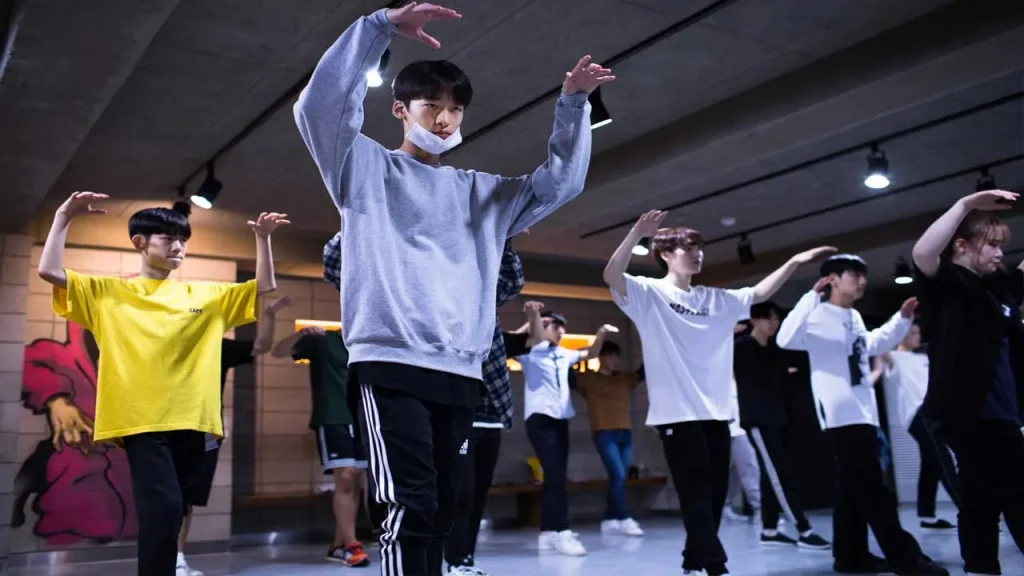
The process is demanding, with regular evaluations and fierce competition among trainees. Only a small number ever debut, but those who do are fully prepared for the industry’s high standards. By the time they perform publicly, idols are skilled not only in music and dance but also in connecting with fans and handling media appearances. This system, while challenging, is a big reason why Kpop artists are known for their professionalism and world-class performances.
Kpop Controversies and Challenges
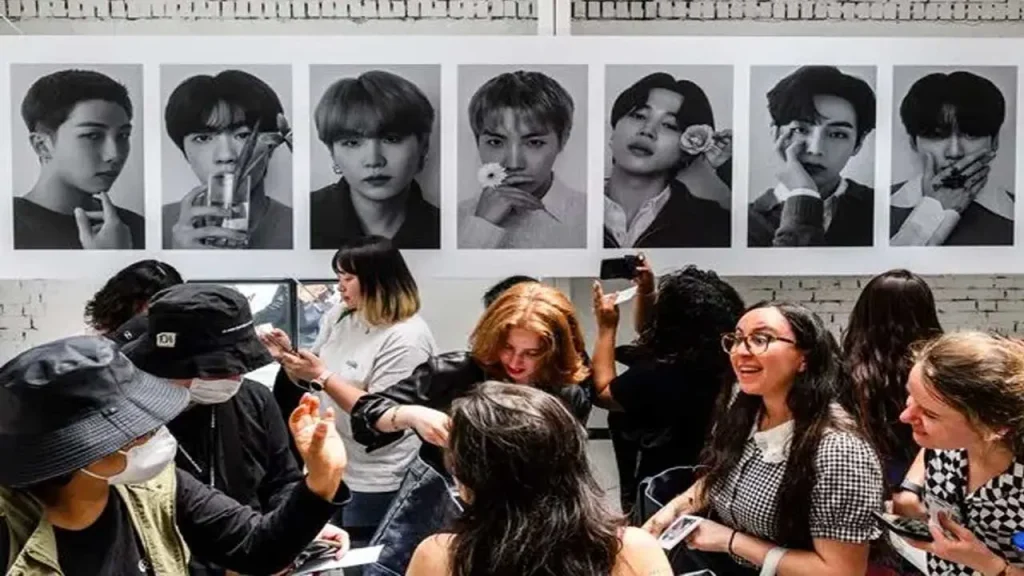
While Kpop is known for its glamorous image and polished performances, it also faces serious challenges behind the scenes. The industry’s intense training system and high expectations can put a lot of pressure on idols, leading to physical exhaustion and mental health struggles. Strict contracts, often called “slave contracts,” have been criticized for limiting an artist’s freedom and locking them into years of demanding schedules. Some groups have also faced unfair treatment, from lack of creative control to unequal pay, sparking public debates about the need for better protection and rights for idols.
Cultural controversies have also made headlines, especially as Kpop expands globally. Issues like cultural appropriation, insensitive lyrics, and misunderstandings between artists and international fans have led to heated discussions online. Scandals involving personal behavior, dating rumors, or disputes with management can quickly go viral, affecting an idol’s career. Despite these challenges, many artists and fans are pushing for positive change, encouraging open conversations about mental health, fair treatment, and cultural awareness in the Kpop world.
The Future of Kpop
Kpop’s future looks brighter than ever as it continues to evolve and attract new fans from every corner of the world. The fourth generation of idols is already experimenting with new sounds, diverse concepts, and innovative ways to connect with audiences through social media and virtual events. Technology, such as AI-powered performances and augmented reality concerts, is likely to play a bigger role in shaping how fans experience Kpop in the coming years. With global collaborations becoming more common, we can expect even more crossover hits that blend Korean pop with other music styles from around the world.
At the same time, the industry faces the challenge of balancing growth with the well-being of its artists. As conversations about fair contracts, creative freedom, and mental health gain momentum, the next era of Kpop could focus as much on supporting idols as it does on producing hit songs. If the industry can adapt to these changes while keeping its trademark energy and creativity, Kpop will not only maintain its global presence but also inspire future generations of artists and fans.
Conclusion
Kpop is more than just a music genre, it is a global movement built on talent, creativity, and the powerful connection between artists and their fans. From its beginnings in South Korea to its worldwide success, Kpop has transformed the music industry with its high-energy performances, innovative marketing, and dedicated fandom culture.
The journey of Kpop is filled with inspiring stories, iconic songs, and legendary groups that have shaped pop culture across continents. While the industry has its challenges, its ability to adapt and grow ensures that Kpop will continue to inspire, entertain, and bring people together for many years to come. Whether you are a longtime fan or just discovering it, Kpop offers a world of music, style, and community that is unlike anything else.
